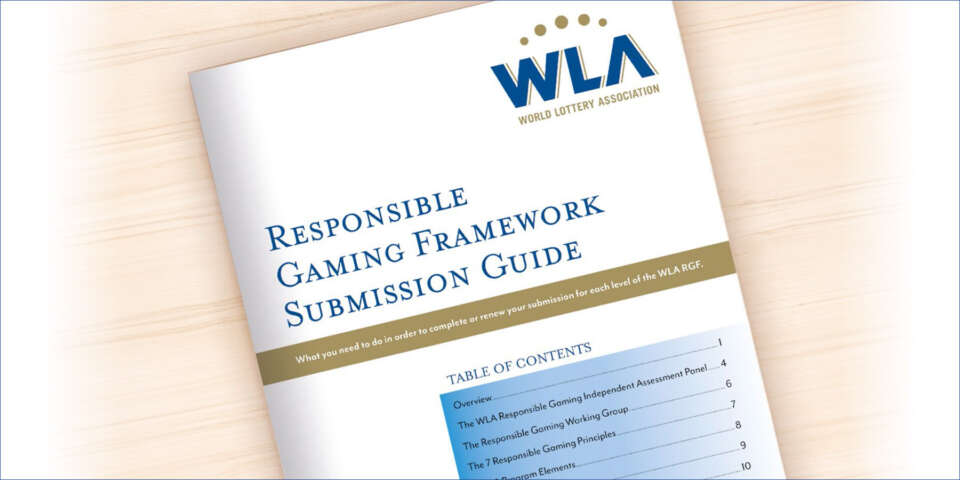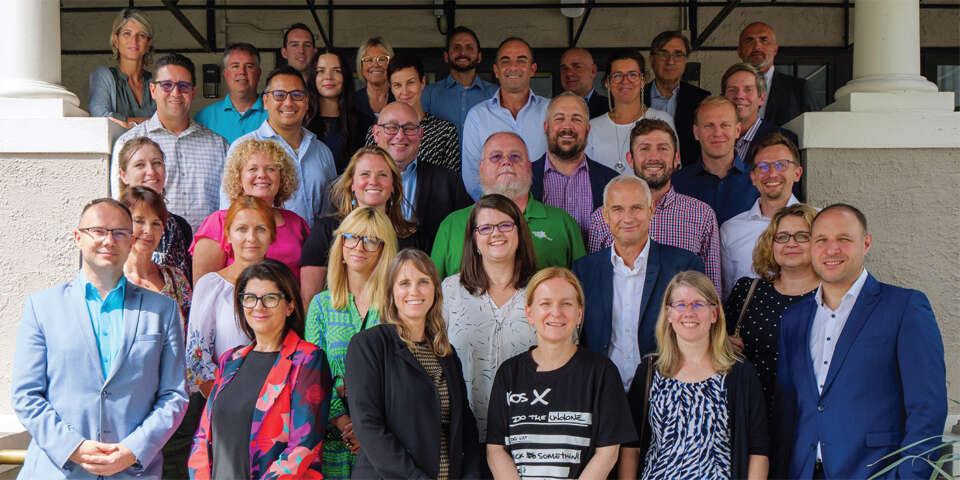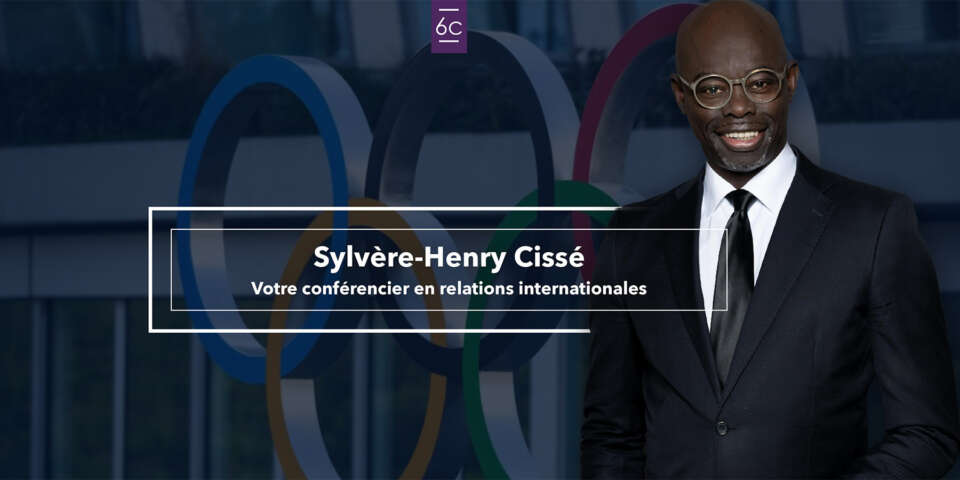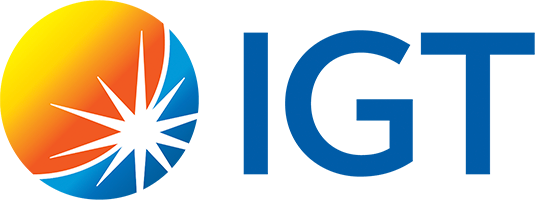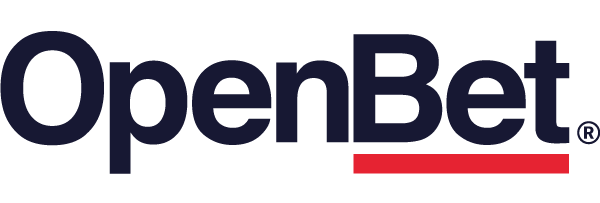
Every lottery that embarks on the responsible gaming (RG) certification journey knows its submission will be assessed by the World Lottery Association Independent Assessment Panel (IAP). When going through the process, many lotteries ask DigitalRG.com for support and knowledge of how the IAP operates. To better understand the IAP role and how it evaluates a submission, DigitalRG.com interviewed Anne Pattberg, Chair of the IAP panel, who provided some insightful information for WLA Members.
Let’s start with ‘who sits on the IAP’ with you?
My two counterparts are Robert Ladouceur, Professor Emeritus at Laval University in Quebec, who is renowned for his science-based approach to responsible gambling, and Henry Chan, former Executive Director of Hong Kong Jockey Club, who has over 35 years of industry experience. From my end, I’ve had extensive experience in sustainability and responsible gaming. I was the Sustainability Director at Camelot in the early 2010’s and the Chair of the WLA Responsible Gaming working group.
The journey for you first begins when the IAP receives the submissions. What happens to them next?
As soon as the WLA receives the submissions, either by 1 May or 1 October, they are shared with the IAP. Then, together with the other panel members, we decide how we will proceed with the review. This is based on the number of submissions received, and sometimes there might be some peculiarities where one member will better understand the context in which the lottery operates. We, avoid any conflicts of interest, for example, if one of us has worked with the specific lottery in the past. Each submission is reviewed by at least two panel members, and as chair, I review all submissions. The submissions are always reviewed in full, not per section.
What happens if both assessors are not satisfied or do not agree on some aspects of the submission?
In the very rare case, that the two reviewers cannot make a decision based on insufficient information, they will look for the advice of the third member of the IAP. They might also ask the lottery for clarifications or further information.
How much time does it take to review and evaluate all the submissions?
Normally, after six to eight weeks, we come together, and through team discussions, we finalize our decisions on the submissions’ evaluation outcomes. The final call lies with me as Chair on any differing views; however, this is very rare as we are almost always aligned in our decisions. This timeframe will also depend on the number of submissions. As these have increased over recent years, it has been extended.
What do you expect from a submission, and are any ever declined?
We do not decline decisions per se, but we cannot assess submissions when there is a lack of context, consistency or information, for instance if the lottery does not adequately communicate about initiatives, which can make it very difficult to assess. We sometimes have this issue with the level 2 and 3 submissions, where the lottery has an RG program, but has not communicated about it clearly and concisely in its submission.
One key element of any submission is to provide context for the IAP’s understanding, for instance, by providing context that can be related directly to the practices discussed in the submission. Furthermore, it is also important to give context and background of the lottery so that the IAP has a more comprehensive understanding of the situation in which it operates.
However, ultimately the IAP should also be able to make an evaluation based purely on the submission. The additional context is used to support the submission and should not be relied upon to provide vital information. When part of the submission is unclear, or we deem there is not enough information, we dig deeper and consider the wider content provided.
What is the most common case of not being able to assess a submission, and how can members avoid this?
For level 2 or 3, a common mistake is a lack of clear communication about what the lottery is doing in its program. In most cases it is not that the lottery is not doing enough. For these levels, I would encourage focusing on communicating current actions and practices and gaps and opportunities. We don’t expect the lottery to be perfect, but we expect it to understand where it needs to improve.
We have also noticed that there is sometimes a misalignment between the level of ambition and the actual lottery’s choice of level for submission. This happens mostly when lotteries want to move from level 2 to level 3. The transition from the planning phase to implementation can be challenging. To advance to level 3, we need lotteries to explain and demonstrate what has been implemented and provide a solid improvement plan.
When moving from level 3 to level 4, lotteries sometimes fail to demonstrate how they assess whether their Responsible Gaming program is working. A common comment that we provide is that lotteries need to show their initiatives' effectiveness, in other words, what is and what is not working, and how they are building on these findings to improve their programs. At level 4, we are also looking to see how well RG has been integrated into the everyday commercial activities of the lottery. These should be at the core of everything the lottery does, rather than in a separate RG program that is not part of the commercial or strategic planning.
And finally, the structure. Express each section clearly and respect the limit of a maximum of 125 pages, as stated in the requirements.
3 tips to increase your chances of successful certification.
- Create a clear structure and context that provides all the information the IAP needs to evaluate the submission.
- Measure the effectiveness of your RG program and its actions, and build on areas that are showing gaps.
- Always refer to previous comments from the IAP to ensure they have been addressed or taken into consideration in the submission.
About DigitalRG.com
Our core belief is that all National Lotteries should do their part in providing an equitable solution for society and the environment. This starts with understanding, planning, and acting on those beliefs. DigitalRG.com is a digital platform that saves time. Our proven process takes lotteries from assessment to achieving any ESG, CSR, Responsible Gaming & sustainability certification easily and well. Sustainability is a journey. However, there is no need to reinvent the wheel to be the most effective. DigitalRG.com aims to make the sustainability journey as impactful and efficient as it can be.
